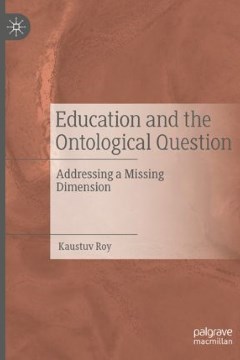Repository | Book | Chapter

(2019) Education and the ontological question, New York, Palgrave Macmillan.
It is perhaps one of the most misemployed, misconstrued, and widely misappropriated terms in the language. From advertisements to cuisine, from architectural designs to consumer goods, from haircuts to pulp-kitsch, there is hardly a domain of human activity that does not lay claim to being "creative." The culture industry combats to be branded as creative in some way. Science too struggles with the term, trying to find out what makes certain people more "creative" than others. And yet the word was once used with great restraint to describe divine action. Only the Creator could create; others merely manipulated or transformed that which had already been created. Etymologically, the word derives from PIE root ker, "to grow" and the Sanskrit cognate kratu, 'strength or generative force." Its importance in the present volume can hardly be overstated. To recall, we are exploring the necessity of ontological understanding in making education what it could be and ought to be—a transformative praxis. Understanding creativity, or rather, developing intuitive insight into the process would lie at the core of such endeavor.
Publication details
DOI: 10.1007/978-3-030-11178-6_6
Full citation:
Roy, K. (2019). Creative being, in Education and the ontological question, New York, Palgrave Macmillan, pp. 189-211.
This document is unfortunately not available for download at the moment.



